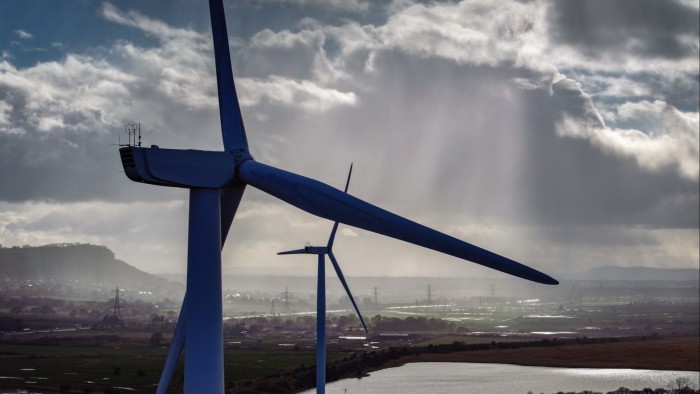Stay informed with free updates
Simply sign up to the UK energy myFT Digest — delivered directly to your inbox.
Britain’s wind farms were paid to switch off for 13 per cent of the time they should have been generating last year, a record level of disconnections that highlights the strains on the UK’s electricity system.
Planned cable outages in Scotland and high summer winds added to existing pressures on the network, the National Energy System Operator (Neso) said on Thursday.
The grid operator had to pay £2.7bn during the 2024-25 financial year to make sure electricity supply and demand was constantly balanced, with wind farms a “major driver” of the bill.
The figures are likely to add fuel to a long-running debate over whether the government should split Britain’s wholesale electricity market into different pricing zones. Proponents argue this would help make more efficient use of wind farms.
Electricity supply and demand has to be constantly matched in order to avoid blackouts.
But wind turbines have been built faster than new electricity cables over the past decade, meaning there is often not enough capacity to move electricity from wind farms, particularly in Scotland, to where it is needed.
If that happens, Neso has to pay wind farms to reduce their output. But that planned output is still needed in a different part of the country, so at the same time Neso often has to pay generators in another part of the country to increase output.
In an annual report on its activities balancing the system, published on Thursday, Neso said: “Wind curtailment is currently a major driver of balancing costs.
“This is because a large proportion of wind capacity in GB is connected in Scotland, which at present is a constrained region of the network.”
The planned cable outages that worsened pressures on the system were taking place in order to increase capacity in the longer term, it added.
The government is due to decide within weeks on whether to introduce “zonal pricing” that would see wholesale prices settled according to supply and demand in different geographical zones.
Supporters argue it would lead to a more efficient system as prices would reflect the constraints on the electricity network.
For example, prices would slump in parts of Scotland during windy periods, encouraging consumers to use the electricity, rather than having to pay to turn them off.
Critics say zonal pricing would leave to uncertainty about power prices that might deter investments in new wind farms needed to hit clean power goals.




